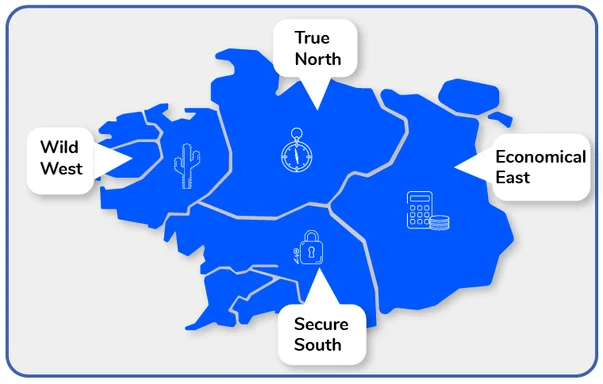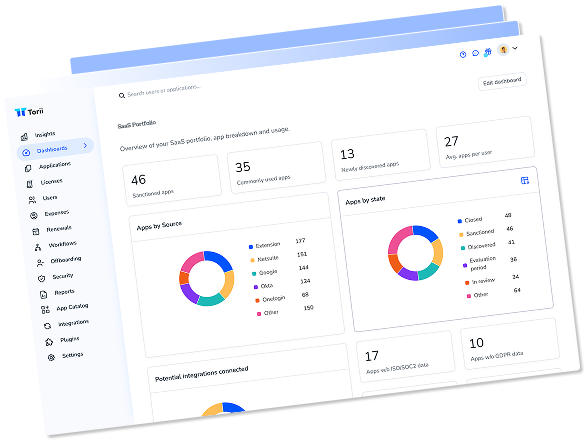Every company is on a unique journey. No matter where we start, we all want to move forward, grow, and change. But sometimes, that change is difficult.
SaaS Spend Management is a journey all its own. One that requires an analysis of the true cost of software, the value of the software towards company goals, and taking action based on those findings.
Importantly, while the definition of SaaS Spend Management might sound straightforward, the act itself is not.
The difficulty stems from the way we adopt cloud applications. Today, anyone with a company email and an internet connection can trial, purchase, and integrate an application. This gives rise to decentralized app ownership and Shadow IT.
But we need visibility into app spending—Especially in today’s macroeconomic environment, with talks of a recession on every news channel. It’s more important than ever to get our spending under control and our applications under our purview.
Whether you are part of IT, Procurement, Finance, or leading a different department—you need to understand the cost, value, and which applications are worth their price tag. It’s a journey, and the first step is knowing your starting point—your current state.
Most companies exist within one of four “regions” of spend management.
Factors like maturity stage, security threats, and growth rate influence a company’s approach to SaaS spend. So let’s look at what each of these states can teach us and why it’s always worth trying to push forward to get to the True North.

The Economical East: When Frugality Goes Too Far
Is the first consideration for any purchase or budget cut the cost? These are indicators of a company residing in the Economical East. To be at this stage means that overall, the company values cost savings above all else.
This could be due to several factors. First, the company may operate in an industry with thin margins, meaning that SaaS spend gets squeezed. Conversely, this state could emerge as a result of recent funding, prompting the company to focus on profitability (which in turn means cutting costs). Finally, a focus on saving could be a function of company culture. Savings-focused CEOs and CFOs tend to trickle that mindset down to the rest of the company.
While focusing on savings can keep companies from wasting a jaw-dropping amount on duplicate apps and abandoned licenses, it can also impede growth. These companies often end up with software and apps that don’t quite cut it on the quality front. This can also lead to a vicious rip-and-replace cycle, where a system is used until it absolutely can’t be used anymore and is then replaced by an entirely new system, which is an exhausting process.
And often, companies in this region still fall short of optimized spending as they lack the visibility to cut through the shadows and find all the shadow IT apps or identify all idle licenses.
Companies trying to move on from this stop on their SaaS spend journey may prioritize innovation over savings, which is great—to a certain point. But over-indexing on innovation can lead to another region with its own issues: The Wild West.
The Wild West: Chaos Reins
Companies in a hyper-growth mode often have a completely different approach to SaaS spend. It’s no wonder why we call this stop along the journey the Wild West.
In this state, the most important objective is to innovate quickly. This often means that employees across the company are encouraged to try whatever works to do their jobs well, whether that’s a new productivity app or an expensive software solution. Having this freedom can be amazing, but it can also cause things to spin out of control—and into the dreaded SaaS swamp—quickly.
While the most direct path to this state of affairs is a “just go!” mindset, where employees buy now and think later, companies can also find themselves here after a significant merger. Combining and streamlining disparate tech stacks often means sifting through a minefield of overlap and unnecessary apps.
One oft-overlooked risk of the Wild West is that it often leaves the door wide open for security threats to enter. When there’s no centralized visibility over what’s being purchased and who’s responsible for it, the number of blind spots vulnerable to hackers grows. So at the end of the day, what these companies gain in speed and innovation, they lose in waste and risk.
The Secure South: Safe and Sound, But At What Cost?
In many scenarios, companies claw their way out of the Wild West after a significant security breach and hobble over to the Secure South to lick their wounds. In this neck of the woods, security, stringency, and centralization are valued over anything else.
This focus on security means that very few SaaS apps make it into the company’s tech stack. Decisions to take on a new SaaS solution are typically approved—and, more often, denied—by a single decision-maker.
It’s not just a past security breach that lands companies in this territory. Sometimes regional or industry-wide regulations require companies to be extra vigilant with their SaaS decisions.
While focusing on security is essential, that focus cannot come at the sacrifice of the organization itself. Unfortunately, many companies in the secure south let their fear of the next breach push them into a state of paralysis which can actually undermine the organization’s mission.
True North: The Final Destination
Each stop along the SaaS spend journey has its advantages and disadvantages. Keeping costs and security threats down makes just as much sense for some companies, as the tendency to overspend in pursuit of innovation does for others. But, at the end of the road is a destination that, for many, seems too good to be true: True North.
Companies that make it to True North have seen what happens when they take the wrong approach to SaaS spend and are ready to work to make things right. Often, these companies have conducted an audit to identify where they’re wasting SaaS spend and where their tech stack is falling short. Now comes the trickier part: committing to optimization.
Having a truly optimized approach to SaaS spend means balancing priorities that can seem at odds with one another: security, cost savings, and innovation. However, putting IT in a “connector” role, where they have a centralized view of what’s going on and are committed to giving teams the tools they need to work well, can introduce lasting change in the right direction. This lasting change provides equal visibility to Finance and Procurement as they finally have the insight and actionable information they need to reduce waste, eliminate surprise contract renewals, optimize operational costs and much more.
When all is said and done, the journey to True North is just that: a journey. As long as you put the necessary checks and balances in place and try not to over-index on one goal over another, you’ll get there, too.
Want to learn more? Read our ebook:

